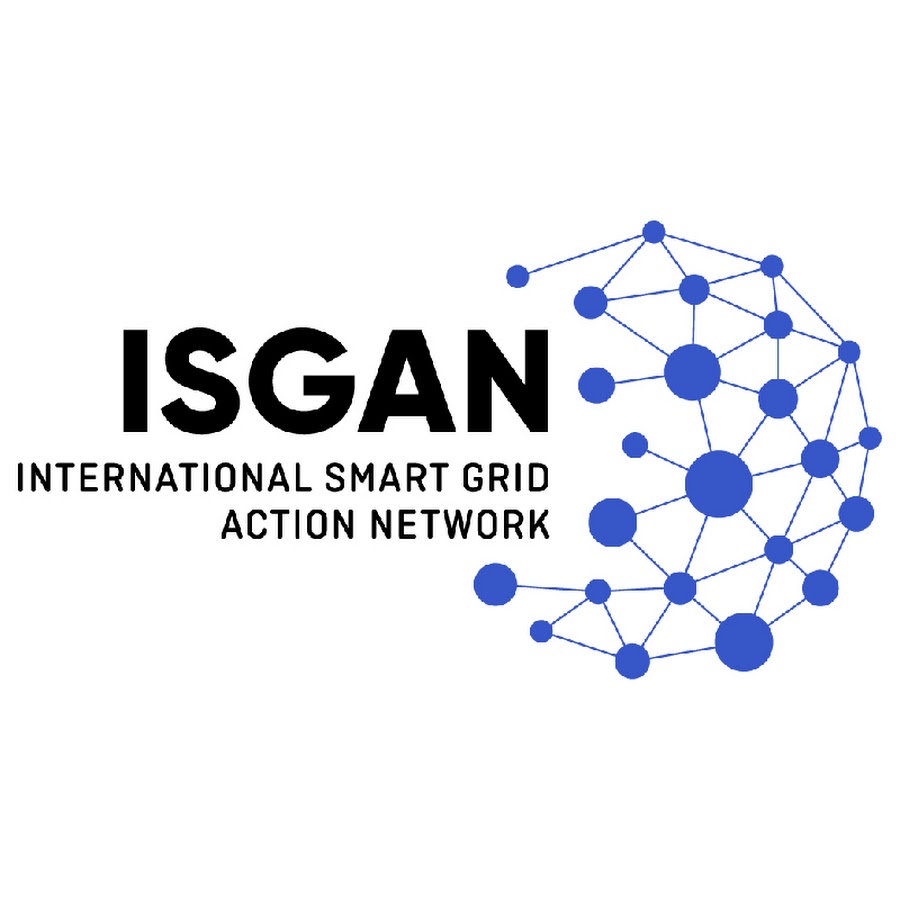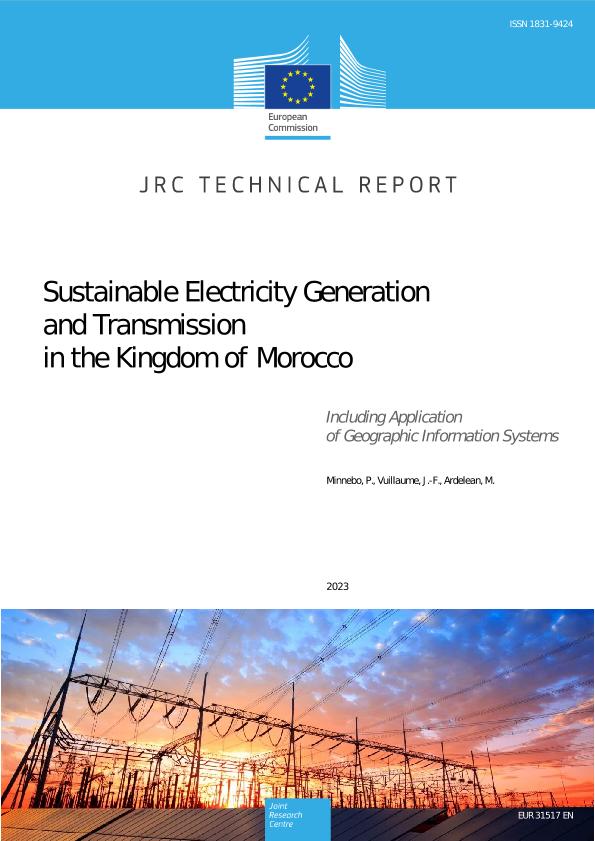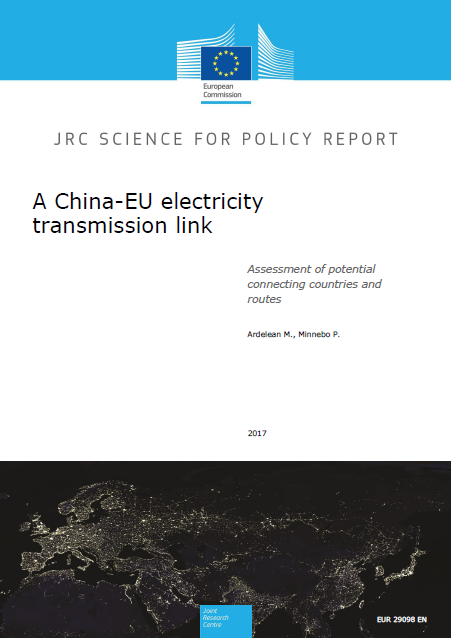Global / multilateral

EU's Power Sector Decarbonization Action Plan
In the context of the Clean Energy Ministerial, the CEM’s Clean Energy Solutions Center (CESC) and 21st Century Power Partnership (21CPP), we co-drafted with DG ENER the EU's Action Plan for Power Sector Decarbonization. These action plans are voluntary, developed by each country individually, not comprehensive of all activities within the jurisdiction, and are living documents that are subject to change.
The EU's Action Plan for Power Sector Decarbonization was presented by the EU Commissioner for Energy K. Simson at the Joint Ministerial Plenary of the 14th Clean Energy Ministerial and 8th Mission Innovation Ministerial.

ISGAN
Operating as both a Clean Energy Ministerial (CEM) Initiative and an International Energy Agency (IEA) Technology Collaboration Programme (TCP), the International Smart Grid Action Network (ISGAN) is an international platform for the development and exchange of knowledge and expertise on smarter, cleaner, and more flexible electricity grids (i.e., “smart grids”).
We have been collaborating with ISGAN for several years in a wide range of annexes/working groups, particularly: smart grids costs-benefits, smart grids project mapping, as well as experimental facility sharing.

2016 - Benefit Analysis of Smart Grid Projects: White Paper 2014-2016
This paper, in which the JRC produced the European section, reviews and compares the US, Chinese and European approaches towards assessing benefits of smart grid pilot projects. It analyzes experiences to highlight their differences, advantages, and disadvantages. In the U.S., we assess projects at two sites: the University of California, Irvine campus (UCI); and the Navy Yard (TNY) area in Philadelphia. In China, we cover several smart-grid aspects of the Sino-Singapore Tianjin Eco-city (TEC) and the Shenzhen Bay Technology and Ecology City (B-TEC). In Europe, we look at a benefit analysis of a pilot smart grid project in the Malagrotta area west of Rome, Italy.
North America
We collaborate with North American organisations and institutions - primarily in the US -, in the context of bilateral and multilateral projects.

JRC-ANL cooperation electro-mobility and interoperability with Smart Grids
The European Commission’s Joint Research Centre (JRC) and the Argonne National Laboratory (ANL) of the U.S. Department of Energy are leading the work on electro-mobility and interoperability with Smart Grids in working group 2 of the EU-US Trade and Technology Council (TTC). This infographic highlights the main concepts of their pre-normative research, which responds to the forecasted increase in the global market for electric vehicles (EV) and supports EU-U.S. commitments to clean energy and decarbonisation.

EU-US Trade and Technology Council (TTC) work on electro-mobility and interoperability with Smart Grids
The European Commission’s Joint Research Centre (JRC) and the Argonne National Laboratory (ANL) of the U.S. Department of Energy are leading the work on electro-mobility and interoperability with Smart Grids in working group 2 of the EU-US Trade and Technology Council (TTC). This infographic highlights the main concepts of their pre-normative research, which responds to the forecasted increase in the global market for electric vehicles (EV) and supports EU-U.S. commitments to clean energy and decarbonisation.

2018 - Submarine power cable between Europe and North America: A techno-economic analysis
The article provides insights for electricity trading through a submarine power cable between Europe and the eastern part of North America. While such ambitious power interconnection concepts appear in recent literature, this article is the first to present a techno-economic analyses. This article concludes that, a 4000 MW cable between Europe and North America could bring an annual socio-economic benefit of 177 M€ in 2030. In addition to the differences in generation costs, mutual benefits from electricity trading between Europe and North America derive from different daily peak demand times, low correlation in generation from renewable energy sources, and in seasonal demand variations. The results of the cost-benefit analysis indicate that the benefit for society is sufficient to cover the investment costs. Thus, the proposed interconnector is welfare improving.

2012 - Assessing Smart Grid Benefits and Impacts: EU and US Initiatives
This report aims to find common ground between EU and US assessment approaches on Smart Grid projects. This joint work was carried out in the framework of the EU-US Energy Council, which intends to deepen the transatlantic dialogue on strategic energy issues such as policies to move towards low carbon energy sources while strengthening the on-going scientific collaboration on energy technologies. The report first assesses correspondences among definitions, terminology and methodological approaches, in order to clarify commonalities and differences. Secondly, it tries to strengthen cooperation on assessment frameworks and on sharing data collection experiences, project results and lessons learned.
South America

2014 - Redes Elétricas Inteligentes Diálogo Setorial Brasil-União Europeia
This report is a final product of the Sectorial Dialogue EU-Brazil 2014 in the area of Smart Grids, where JRC is the main EU counterpart.
The document presents an extensive overview of the Smart Grid related activities in Brazil and EU and in particular, covers the following topics: i) Identification of projects in Brazil and Europe in the area of Smart Grids; ii) Information on manufacturers / suppliers of equipment of Smart Grid infrastructure in Brazil and Europe; iii) Identification of public and private institutions in Brazil and Europe, such as: research centres, universities and institutes involved in the area of Smart Grids and iv) analysis of industrial, science and technology policies in Brazil and Europe.

2023 - Sustainable electricity generation and transmission in the Kingdom of Morocco
This technical report presents a concise assessment of the Moroccan power system, in relation to the country’s pursued clean energy transition. It provides an introduction into the most critical factors affecting this transition, both technical and regulatory, with focus on development of generation and transmission assets of clean electricity. Morocco’s general energy and climate change characteristics are discussed, giving emphasis to related engagement and international collaboration. The legal framework of the Moroccan power sector is addressed, along with basic data on electricity demand, generation and transmission. Sources for more sustainable electricity generation are discussed, i.e., primarily renewable energy (solar, wind and hydro), as well as natural gas in the energy transition, and the option of nuclear energy. Past, ongoing and future transmission system development programmes are treated. As a scientific application, the role of geographic information systems in the planning phase of power generation and transmission installations is considered. Future investment needs are highlighted, along with the most pertinent funding organisations.

2018 - Assistance to Cyprus
We supported, along with DG REFORM (ex SRSS) and DG ENER, the Cyprus government to establish a comprehensive medium- to long-term policy (2030 time horizon) for the optimum penetration of renewable energy in the electricity system. The following two consecutive projects were carried out:
The first project, concluded in 2016, aimed at assessing the current state of the transmission and distribution electricity systems and proposing solutions for increasing the Renewable Energy Sources penetration in the electricity system. It was split in four interlinked activities, spanning from system characterisation, to transmission/distribution simulation up to Unit Commitment and Economic Dispatch (UCED) analyses, with a view to perform an integrated assessment of the Cyprus electricity system - power infrastructure and markets.
The second project, finished in 2018, aimed to complement the system analyses performed in the first project and perform deeper evaluations on the interactions of different energy systems and technologies.

2017 - Science for the AU-EU Partnership - Building knowledge for sustainable development
People, planet, prosperity and peace are four priorities shared by Africa and Europe, and areas where opportunities for beneficial cooperation abound. Over the past three decades, the European Commission’s Joint Research Centre (JRC) has worked with many organisations and institutions across Africa. This report and its accompanying interactive online service ‘Africa StoryMaps’ present the key findings from this collaboration, and set out options the decision-making, research and education communities may consider.
The report focuses on the African dimension of the partnership. It explores the opportunities and challenges arising from the fact that Africa has over twice the population of the European Union (EU), is the world’s most youthful continent, has an economy that is growing faster than that of the EU, is almost seven times larger geographically, yet is vulnerable to diverse internal and external stresses.

2014 - Smart Mediterraneo: Best practices, innovation and pilot projects in smart grid development
The event highlighted the importance of a multi-disciplinary approach to the research and knowledge development; well-structured and lean procedures as a prerequisite to access the European funds; the post-development phase of the project, when the funding period is over and the technology is in place for delivering products and services.

2011 - A European supergrid for renewable energy: local impacts and far-reaching challenges
This article assesses the impact of extensive deployment of indigenous and external renewable energy sources on a local electricity system and discusses the main challenges faced by the European power grids in integrating high shares of renewable-based generation technologies. It presents the 2030 scenarios for the Sardinian power system and the results of steady-state analyses in extreme (renewable) generation and consumption conditions. These results are eventually combined with the assessment of key technology development trends to explain how this can affect the development of a European supergrid. In general, the article stresses that rendering the bulk-power system capable of accommodating high renewable energy penetration not only requires reinforcing the electricity highways but also demands carefully planning the architecture of and the interface with regional power systems.

2017 - A China-EU electricity transmission link: Assessment of potential connecting countries and routes
This report looks at the potential routes for a future power interconnection between EU and China. China has launched in 2016 the idea of transmitting electricity as far as Germany via an Ultra High Voltage Direct Current (UHVDC) link. Three route scenarios are considered and analysed, all starting in RES-rich areas in western China and heading towards Europe on three different paths. High voltage direct current technology is considered and its potential is assessed.
The renewable energy sources in the countries along the potential routes as well as the power sector and power grid in the countries crossed are analysed.

2014 - Paths Toward Smart Energy: A Framework for Comparison of the EU and China Energy Policy
This paper presents the concept of “smart energy” as a way to embrace the target to meet commitments to the world's sustainability, and performs a comparison of the energy policies of two key-world players, the EU and China, is undertaken in this context.
National decisions and behaviors are strictly interdependent and each of them may affect the whole planet; hence, the harmonization and coordination of the policy are the key issues. This is particularly true in the energy sector, where scarce resources, which are presently unevenly shared by the various nations with the possibility of conflicts arising need to be allocated to keep the pace with economic growth and in a manner compatible with the preservation of the environment.
A framework for quantitatively assessing the effectiveness of various specific policy tools is proposed. The policies are defined and analyzed with reference to the general goals, the tools to pursue those goals and their outcomes, possibly in a quantitative manner resorting to a set of meaningful metrics.
